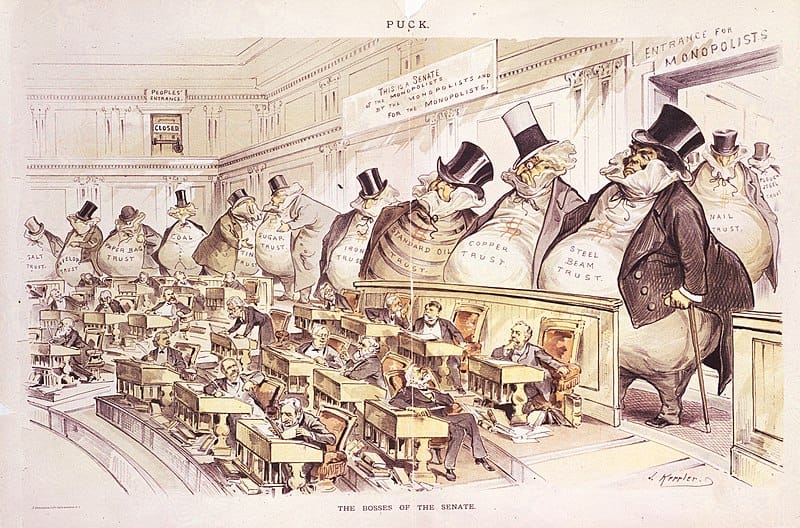The Aristocracy Is Eating the Peasants
By John Rubino at Substack

Most people (especially most Americans) still seem to view the events of the past half-century as more or less random. Booms and busts erupting out of nowhere, impoverishing all but a handful of lucky elites. Political crises that end up dividing rather than uniting. Wars that cost fortunes and resolve nothing. Everything is bad, and nothing is related to anything else.
But of course that’s not true. Each of the above events serves the same purpose: to enrich a modern aristocracy at the expense of everyone else. And the endgame is looking even worse.
To see the scam play out, let’s go back to 1995. Two decades previously, in 1971, the US and by extension the world had ditched sound, gold-backed money in favor of “fiat” currencies that their governments, via their central banks, could create in infinite quantities out of thin air. The result was spiking inflation and exchange rate chaos in the 1970s and soaring government deficits in the 1980s.
By the 1990s it had become clear to the people running major governments and big corporations that unsound money would lead to unsustainable debt, which in turn would destabilize the financial world and bring about a hyperinflationary depression followed by a French Revolution-style reckoning for those responsible.
That generation’s elites were thus left with two choices: Return to the gold standard and avoid monetary collapse -- but at the cost of giving up the ability to create money at will. Or use their fictitious currencies to steal as much real wealth as possible from the peasants and let future elites deal with the eventual collapse.
They, as the sociopaths we now know them to be, chose the second strategy. Here’s how they pulled it off:
The Greenspan put. In the second half of the 1990s there occurred a series of mini crises that in retrospect seem almost beneath notice, but at the time were big enough to provide a pretext for intervention. Russia, Mexico, Asian emerging countries and a hedge fund named Long Term capital Management all defaulted or otherwise threatened to cost major US banks painful amounts of money. In each case the Federal Reserve’s Alan Greenspan, along with the US Treasury, bailed out the threatened banks with cash or loan guarantees.
This made clear to Wall Street and its favored customers that any risk, no matter how outrageous, would pay off one way or another. If a bet worked, there would be fees and capital gains. If a bet failed – as in the 1990s mini crises – the Fed would step in and make its friends whole. And so the “Greenspan put” -- named for a financial instrument that traders use to protect against losses – came to dominate the financial world for the next twenty years.
The dot-com bubble and 9/11. With the banks now free to finance virtually anything, they chose in the second half of the 1990s to inflate a tech stock bubble in which pretty much any business with a “.com” its name or mission statement could get near-infinite funding. This “dot-com bubble” expanded beyond anything the US equity markets had ever seen, and then burst spectacularly in 2000.



